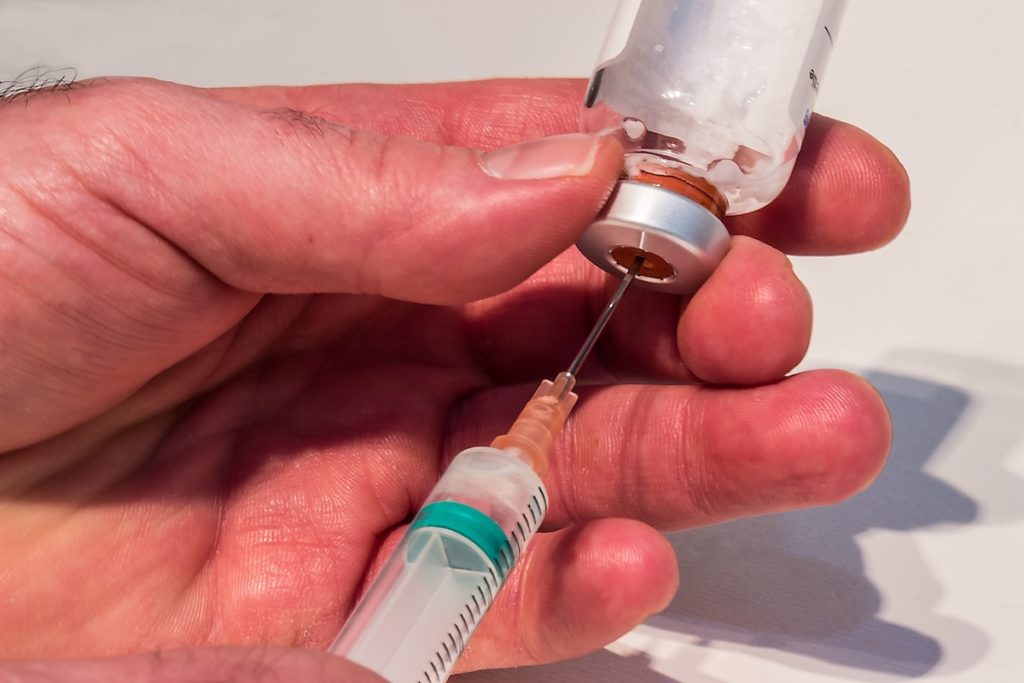
Incidents involving violence and aggression are a frequent occurrence in adult mental health inpatient settings. They are managed by use of restrictive interventions (coercive practices) such as restraint, seclusion, injection of sedating drugs and constant observation.
The use of coercive and restrictive practices carries significant risks, including physical and psychological harms to both patients and staff. Interventions are costly in terms of staff sickness and litigation as well as the extra staffing resources required to implement them.
There remains a lack of research around patients’ perceptions before, during and after the use of restrictive interventions. A new review by Tingleff et al (2017) aimed to synthesis existing patient-focused research to understand their perspectives in greater detail.

Restrictive interventions such as restraint, seclusion, sedating drugs and constant observation are used in mental health inpatient settings.
Methods
A systematic literature review was undertaken. Four databases (CINAHL, PubMed, EMBASE & PsycINFO) were searched from 2000 to February 2017. A block search approach was undertaken. 4,880 records were screened against a predetermined criteria, resulting in 62 full texts being examined.
Thematic analysis of included texts (n=26) occurred. Studies were critically appraised (using the CASP checklists), but the outcome of this was not reported.
Results
- 26 peer reviewed studies were identified.
- Six themes (although seven reported in the paper) and associated sub-themes were identified from the thematic analysis.
- These themes were mapped to the timeline for restrictive intervention practice, namely before, during and afterwards.
Before coercion
- Being subjected to professionals’ control
- This theme focused on the interactions between staff and patients. Triggers seemed to centre around power, loss of autonomy and controlling behaviours by staff.
- Protest behaviour
- This usually occurred in response to perceived staff attempts at controlling the situation, and sometimes included actions like refusing medication.
- There were two reported sub-themes which seemed to increase the potential for restrictive interventions:
- Environment (being un-therapeutic)
- Communication (particularly poor information provision).
During coercion
- Being subjected to professionals’ control
- This theme related to the psychological and physical effects of being controlled against your will and the feelings particularly associated with trauma that resulted from these experiences. The published literature on this theme mainly reported on the negative impact associated with coercion.
- The sub-themes were:
- Physical discomfort; pain primarily a result of the coercive intervention
- Physical environment, which related mainly to seclusion rooms and environments.
- Control was also evident in the Interactions with professionals and its sub-theme communication (which also featured in the After Coercion theme – see below). It was evident from the literature that professionals repeatedly failed to interact in a therapeutic or compassionate manner, examples included lack of concern and empathy. Communication was limited and often didn’t include a rationale or description of the practices being undertaken.
- Impact of coercive measures
- Some patients did report that restrictive interventions did have positive benefits; for example by preventing an escalation in violence or self-harm, where the resulting interventions maintained patient safety.
After coercion
- Interactions with professionals/Communication
- When staff appeared to withdraw following an incident, this clearly impacted on the debrief and subsequent communication. Staff withdrawing and communicating less also damaged the therapeutic relationship between the patient and staff.
- Physical discomfort
- This included the effects and side effects of medication, as well as the physical and psychological effects of restraint, or seclusion.
- Other consequences
- The published literature suggested that longer term psychological outcomes resulted in subsequent trauma and potential delays to recovery.

Psychiatric patients associate the use of coercive interventions with strong negative perceptions and wish to be treated with respect by professionals.
Conclusions
The authors concluded:
The results from the study indicate that the majority of patients in the reviewed studies associated the use of coercive measures with “negative perceived impact”.
In order to enhance care during the process of coercion, greater sensitivity to the patients’ view of the situation is desirable at each point in the coercive process.
Discussion
This review has attempted to synthesise recent qualitative research focused on patients’ views of restrictive interventions. It clearly highlights how little we know about the preferences of psychiatric patients at times when staff intervene to maintain an individual’s safety, or indeed potential alternatives to prevent restrictive interventions being used.
It’s concerning that there is such a limited literature on patients’ views and perceptions around this topic. We still do not plan interventions with the preferences of those likely to receive them in mind. An increased focus on reducing restrictive interventions has resulted in a plethora of interventions (for example Safewards, NoForceFirst, 6 Core strategies (PDF)), but we still don’t know which work most effectively and are preferred by patients.
The review also highlights how much staff influence and trigger the use of restrictive interventions, clearly further work is needed to understand this more. There are known triggers that can escalate a situation such as the use of PRN medication, staff attitudes and ward rules. Whilst there is an international focus on reducing restrictive interventions, studies currently focus on individual interventions, but not the whole picture.
More focus on differences in practices across cultures and gender could yield significant improvements in practice. For example, women are more likely to be restrained, with potential for greater physical and psychological damage, particularly given improved understanding around childhood trauma. We should present opportunities to learn more about individual staff who excel at preventing restraint, as well as identifying those staff who struggle. This area really demands further research and this should be combined with a greater emphasis on de-escalation skills and training.

Professionals need to articulate concern and empathy towards patients and to improve communication skills before, during and after a coercive incident.
Limitations
- The review did not include grey or related literature
- Critical appraisal was carried out on the included studies, but the outcomes of this were not reported
- A lack of standardisation to practice, and differences of methods used across the world makes a synthesis of this kind difficult
- It was also unclear whether patients were involved in the review process itself, which is clearly important for a review of this nature.
Links
Primary paper
Tingleff EB, Bradley SK, Gildberg FA, Munksgaard G, Hounsgaard L. (2017) “Treat me with respect”. A systematic review and thematic analysis of psychiatric patients’ reported perceptions of the situations associated with the process of coercion. J Psychiatr Ment Health Nurs. 2017;00:1–18. https://doi.org/10.1111/jpm.12410

I have no history whatsoever of resistance threats violence ,nothing. I am physically disabled. But as a woman who’s been face down restrained now 3 times in nhs setting I absolutely know MH nurses use it as a first response not a last resort & don’t even bother to record much of the time. It is abuse nothing short of and any sympathy for staff went a long time back.Have seen so many vulnerable women pts pinned down by 5/6 all male staff who literally laugh about the power they have over women’s bodies. Women very often with a history of abuse. The Trusts that don’t respond to the FOIs like ours have a dire record ‘re this and in our London Trust its on the increase. And we have a ‘womens lead’. I would rather be dead than face the threats of this hanging over me. I won’t ever ask for help when voices tell me die as death feels safe. Being a woman inpatient doesn’t. Psychiatrists turn a blind eye yet condone as writing up injectable sedation is standard practice in all wards including when informal. Shouldn’t happen a full risk assessment has taken place and can justify and then as a single dose only each time. There will NEVER be research into the trauma caused as this is the whole purpose. To threaten vulnerable people . Because as a MHN you can.
I think staff really do not realise when they are being coercive.And when they use coercive measures, they think its a justified way of protecting patients from further harm.
I am a medical student, so I do not have alot of psychiatric experience, but the thing that struck me the most was the difference in the way staff handle acutely distressed patients. The week before I did psychiatry I was on placement in acute medicine. A female became distressed, and agressive, but the staff on the acute medicine ward, gave her space and time to calm down while watching her.
The next week i was on psychiatry, the same female patient became distressed,but this time she was restrained on the floor by 4 male members of staff straight away.
I asked why, and they said they were preventing the situation from escalating.
Having seen this situation play out, I cant help but wonder if standard practice is mental health is coercive practise
Many patients and their families would argue that MH nursing attracts those who prefer the coercive approach. You cant not know what you are doing is coercive – the use of restraint has a huge amount of policy, procedure, guidance and code of practice surrounding it. MH staff definitely know they are being coercive. It’s not an oversight. It’s planned. And the abuses around it have been loudly flagged by patients for at least 20 yrs. They just didn’t anticipate patients would ever get to share their stories. But thank you for calling out what you saw. Would hope that you have raised it formally as well
I did raise it formally, and that is when I realised staff just don’t realise how coercive their behavior is!
The official response said that staff will always use the minimal force required, and coercive measures are only used when it is in the patients best interests.
Best interests? How is using restraint before attempting to talk in the patients best interests?I saw it as only in the best interest of staff to resolve the issue quickly.
Mental Health patients have less rights, that patients with physical ailments. MH is this surreal place were stuff that is would be outrageous in physical health care, is suddenly alright due to “best interests/safe guarding”
I have not seen any value placed on the views or experience of the service users.Its as if staff believe that the views and experiences of mental health patients are not as credible or valuable, as staff views and and perceptions.
“It’s concerning that there is such a limited literature on patients’ views and perceptions around this topic”
It’s not concerning it’s absolutely disgusting.
I was “lucky” enough just to be on constant observation for 24 hours whilst in hospital and there was no discussion about this with me whatsoever. Even if someone has not suffered any trauma in their life I think they’d (at the very least) feel uncomfortable at someone sitting watching them, making them sleep with a light on so they can be watched, only allowed 1 minute in the bathroom before having to shout that you’re still in the bathroom” etc. To top it all, in my experience the person doing this observing doesn’t even engage with the person they’re observing.
What disturbs me even more is that I am fully aware that my experience was at the very mild end of how traumatic such practices can be yet I will never forget the shame and distress those 24 hours caused me.
Do staff stop to think about how this affects future interactions with mental health staff or other healthcare professionals?
When i was suicidal I was watched for 24 hours a day.It was awful, and I felt so violated. It was awful and I feel traumatized.
It left me determined to avoid future contact with mental heal staff. This means I will probably present at a later stage when my situation has deteriorated.This means I am stuck in a cycle were I am more likely to be subjected to coercive behavior.
I complained about my treatment, and they said the apologize for “my perceived distress, but staff actions were part of safeguarding”
I think that line sum up the attitude staff have. If I am as a patient I am distressed, it is my feelings. Each persons feelings are true to themselves.
But in psychiatry there is this surreal world, were staff are always right, and patients have perceived distress, but are not actually upset!
[…] “Treat me with respect”. What happens before, during and after coercion? […]